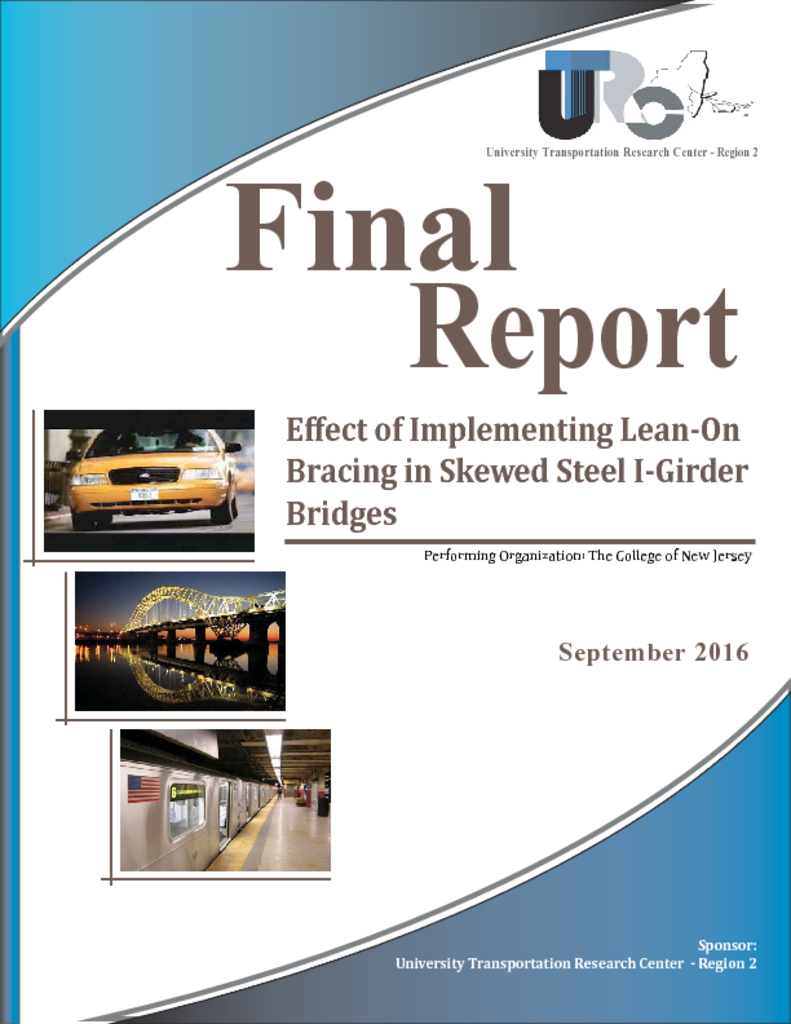Skew of the supports in steel I-girder bridges cause undesirable torsional effects, increase cross-frame forces, and generally increase the difficulty of designing and constructing a bridge. The girders experience differential deflections due to the skewed supports, and undesirable effects arise when the girders are linked transversely. Before the placement of the deck, the main method of linking the girders transversely is through the use of cross-frames. The cross-frames are designed to provide stability during construction and distribute transverse loads through the bridge girders; this is their primary role. Cross-frames also help control differential displacement during deck placement and distribute vertical loads in the bridge’s elastic and inelastic ranges. The cross-frames are not specifically designed for these tasks; these are the secondary roles of the cross-frames. Lean-On bracing has been proposed to reduce skew effects caused by traditional cross-frames. While having been shown to improve skew effects, the alternative cross-frame designs have not been evaluated on the effect they have on the cross-frames’ secondary roles.




